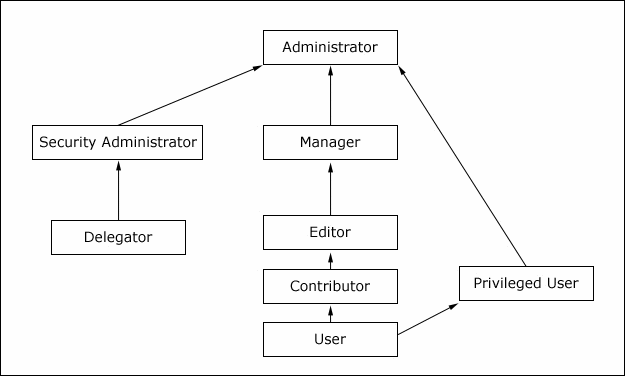Portal Role
A role combines a set of allowed actions with specific WebSphere Portal resources. This set of allowed actions is called a role type. For example, the role type Editor contains allowed actions like view resources, modify resources, and create new resources.
Roles are denoted as RoleType@Resource.
For example, the Editor role type combined with the Top Category
Page resource results in the role Editor@Top Category
Page. For more information, see Resource level access control.
As the following figure illustrates, roles are organized in a hierarchy. Each role type contains all allowed actions that are contained in the role types directly beneath it in the hierarchy. For example, Privileged Users and Editors can do everything that Users can do. Managers can do everything that Editors and Users can do.

Therefore, by properly assigning roles, such as User@Top Category Page, to WebSphere Portal resources, like Virtual Portal A Authenticated Users member group, it is possible to create a personalized navigation experience by user segments. This indeed is the most basic form of personalization – to provide view access to a set of pages, portlets, documents, and Web content to a group of users. For more information about how to assign role types, see Setting resource permissions.